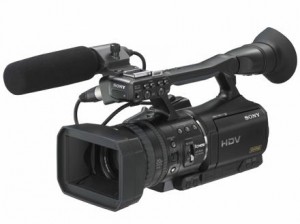Download a very nice Final Cut Keyboard Shortcut file HERE
Also, believe it or not, there is an iphone / iPod app for FInal Cut and Photoshop keyboard shortcuts ! Search the iTunes App Store for “iKeysToGo” .
Download a very nice Final Cut Keyboard Shortcut file HERE
Also, believe it or not, there is an iphone / iPod app for FInal Cut and Photoshop keyboard shortcuts ! Search the iTunes App Store for “iKeysToGo” .
 A common misconception about editing is that it’s as easy as cutting and pasting clips together. In its most basic form, it is that simple. However, perfecting the art of editing takes time and dedication, as well as a firm grasp on techniques. One of these techniques is proper pacing.
A common misconception about editing is that it’s as easy as cutting and pasting clips together. In its most basic form, it is that simple. However, perfecting the art of editing takes time and dedication, as well as a firm grasp on techniques. One of these techniques is proper pacing.
Obtaining a good pace in your video is one way to keep your audience engaged in what you are presenting to them. To get the proper pacing for your video you should not only consider the type of video you’re making and the target audience, but the length, variety and rhythm of your shots, as well.
The length of each shot will lend itself to the overall feel of the video. Short, quick shots are great for high-energy videos, whereas longer shots will slow the pace down, and are more appropriate for reserved or dramatic videos. However, too many shots that are identical in length will bore your audience due to a lack of variety. Be sure to introduce a mix of shot lengths to keep things interesting. For example, if you have a string of long cuts, throw in the occasional quick cutaway. If you have a series of quick cuts, make the next one a bit longer in order to give the viewer a chance to catch up with the action.
Depending on the project you editing, the pacing will vary. Try to establish a rhythm when piecing together individual shots. This will allow your shots to be more cohesive, despite the changes in length and content. Rhythm in video is necessary, much like it is necessary in a catchy tune, and will keep the viewer intrigued and wanting more.
By practicing good pacing, and other advanced techniques, you’ll be able to create videos that are more compelling to watch. You’ll find that there is much more to editing than simply cutting and pasting. After all, one of the best parts of editing video is getting to see the pieces of your story come together in a way that enhances the moment you’re trying to capture.
 You recently purchased a high def video camera. It offers different frame rates (like 24p, 60i, etc). What do they all mean and how can they create better video?
You recently purchased a high def video camera. It offers different frame rates (like 24p, 60i, etc). What do they all mean and how can they create better video?
When to use these frame rates for video:
Use 60i for stuff that you want to look like TV/news or where motion/camera movement is fast.
24p for film output or creative effect.
30p for more filmic effect.
 The 15 Second Rule
The 15 Second RulePatience is hard for video shooters. I guess it’s because we’re human, and humans generally struggle with it.
Still, if you have a little patience when you’re shooting video, you’ll be happier with your results. For example, there’s the 15 second rule. It’s simple, but it will make your life a lot easier.
Here’s how it works:
When you’re getting a specific static shot — make sure you record for at least 15 seconds.
That’s it? Yes, it’s as easy as that.
Why this amount?
Fifteen seconds of a single static shot is more than you’ll likely need. This will give you choices later when you’re editing. Because editors want to hold the attention of their audience, most shots in the final edit will last 4 seconds or less. If they were to use the entire 15 seconds that you captured, it would feel like an eternity to the audience.
By the way, when I refer to a static shot, I mean a shot that has little or no movement. This might be an establishing shot, a video portrait, or a number of other scenarios. When there’s almost no movement, it’s (usually) hard to watch a long clip (such as 15 seconds).
If you’re capturing 15 seconds when you shoot, you have a lot of 4 second options inside of the 15 second clip. For example, you could use seconds 1 to 5, seconds 2 to 6, seconds 3 to 7, and so on. You get the idea.
If you’re like some shooters and you only record for 4 seconds because that’s how much you’ll need in post, then you’ve limited your options. Whether you’re doing your own editing or having someone else do it, remember that editors love options. It gives them room to move. And the 15 second rule helps get that done.
During the 15 seconds, resist the urge to zoom the camera.
Resist the urge to adjust.
But most of all, resist the urge to stop rolling.
Capture at least 15 seconds, and then you can set up for your next shot.
Let's give em' something to talk about!